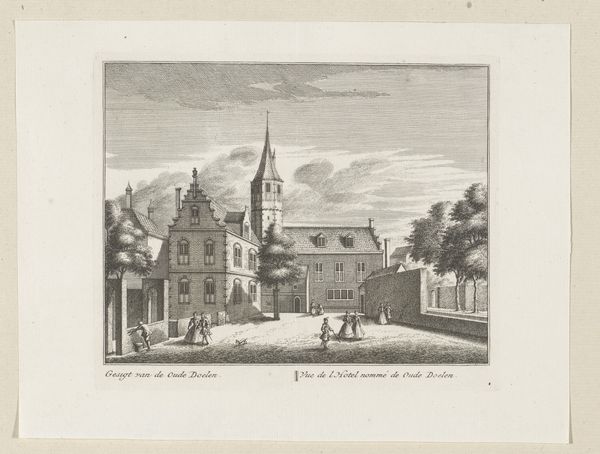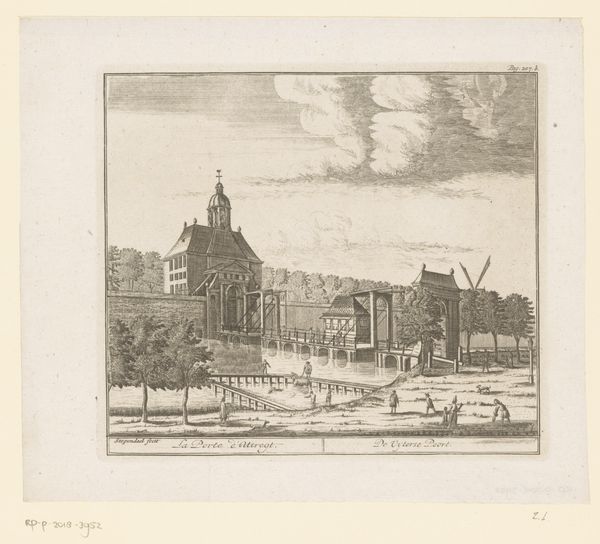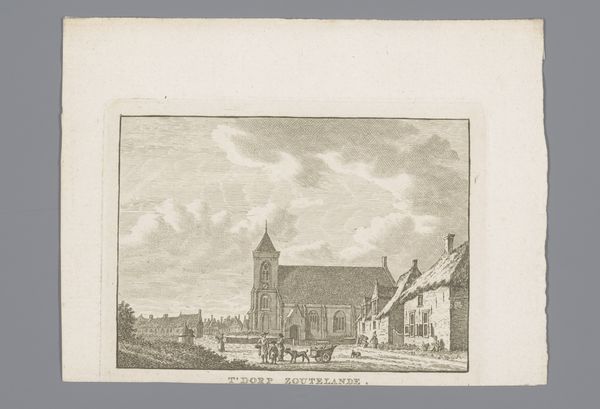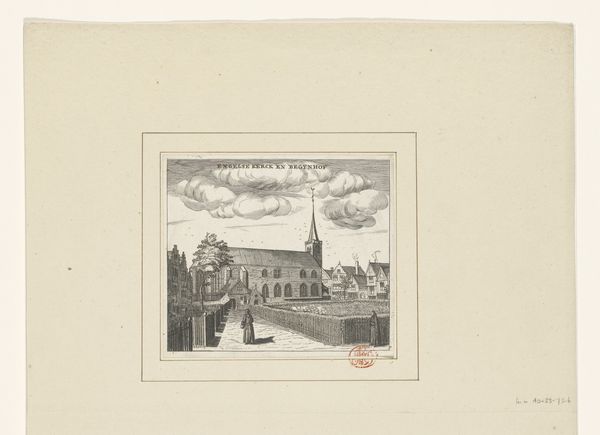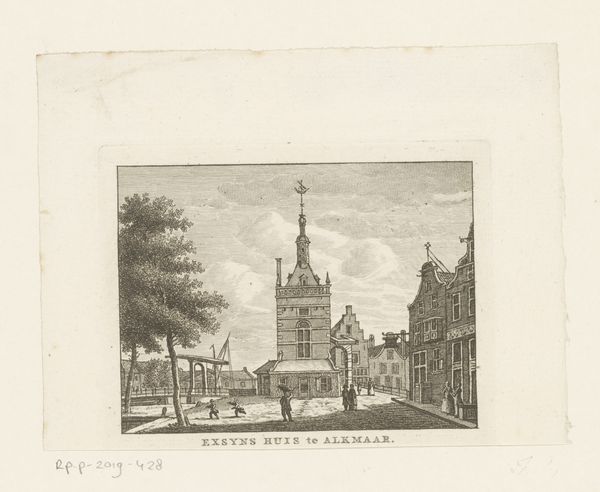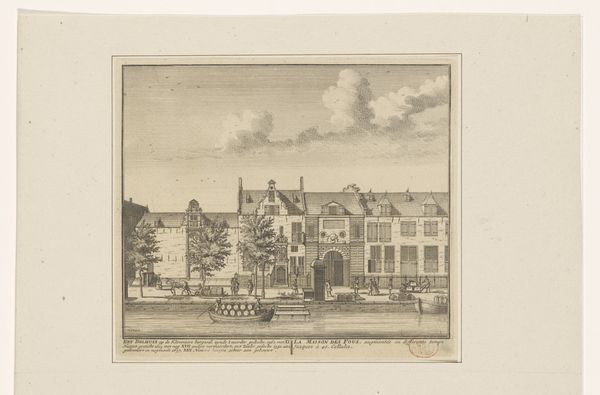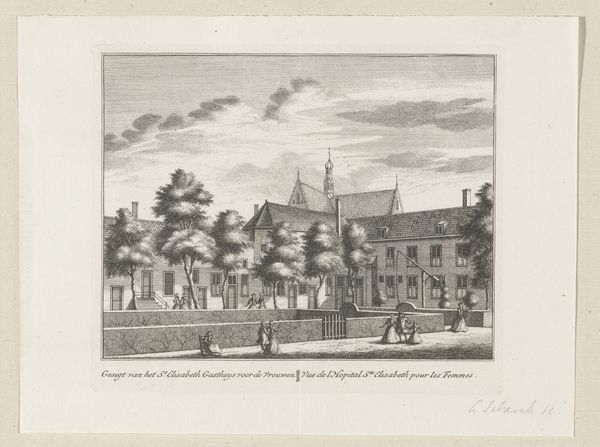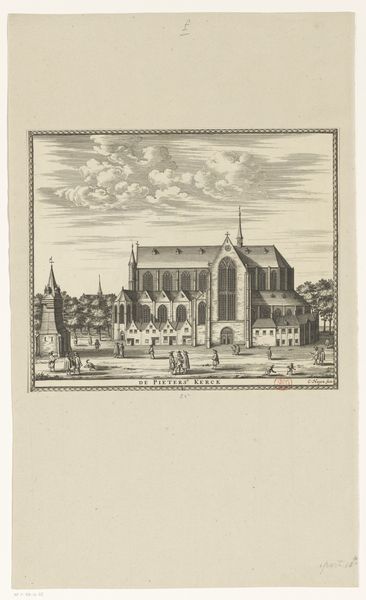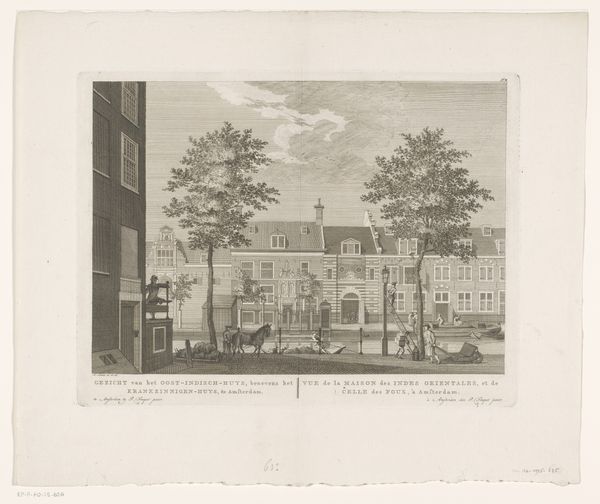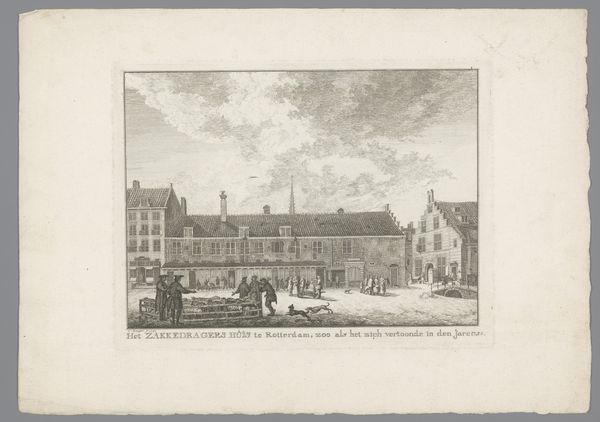
print, etching, engraving, architecture
#
baroque
#
dutch-golden-age
# print
#
etching
#
old engraving style
#
landscape
#
cityscape
#
academic-art
#
engraving
#
architecture
Dimensions: height 178 mm, width 213 mm
Copyright: Rijks Museum: Open Domain
Curator: There’s a remarkable stillness to this cityscape. Editor: Yes, Jan Caspar Philips' etching, "Gezicht op het Oude Stadhuis en de markt te Ysselstein," from 1749, does possess a quietude. What resonates most with you? Curator: The town hall, undoubtedly. Its architectural features almost resemble a stylized crown, imposing and representative of societal authority and stability, and the cloudy sky gives it an emotional weight that's hard to ignore. Editor: And beyond its literal representation, the town hall as a symbol, what does it evoke? What meaning did it hold in the cultural context of the Dutch Golden Age as it was waning into the Baroque? Curator: Civic pride, certainly, a physical manifestation of communal identity in this Dutch town. One can see how the structure’s geometry strives toward idealized order even in a somewhat tumultuous atmosphere. It signifies established structures—governmental, social—striving for lasting endurance. Editor: Indeed. The presence of this governmental power in the everyday lives of Ysselstein's residents tells us of the era's shifting power structures, and this print helped to consolidate the imagery of civic virtue and orderliness, especially within the expanding Dutch print market of the time. Did images like this help form public opinion? Curator: Inarguably, it provides a controlled, curated viewpoint of the social sphere for the audience. That very deliberate viewpoint would have communicated not just the scene's look, but also its atmosphere and the values related to order and calm. The artist deliberately selects a tranquil day; how might the message shift on a busy, market-filled day, or on a day of national celebrations? Editor: An intriguing proposition. If a bustling marketplace were represented, the print could highlight civic activity. Then its interpretation might shift, revealing how collective events influence meaning within public understanding. Curator: Precisely. It reflects on how places imprint memory on us. Editor: That visual continuity really brings history into a tangible realm, influencing viewers throughout the ages. Thank you.
Comments
No comments
Be the first to comment and join the conversation on the ultimate creative platform.
